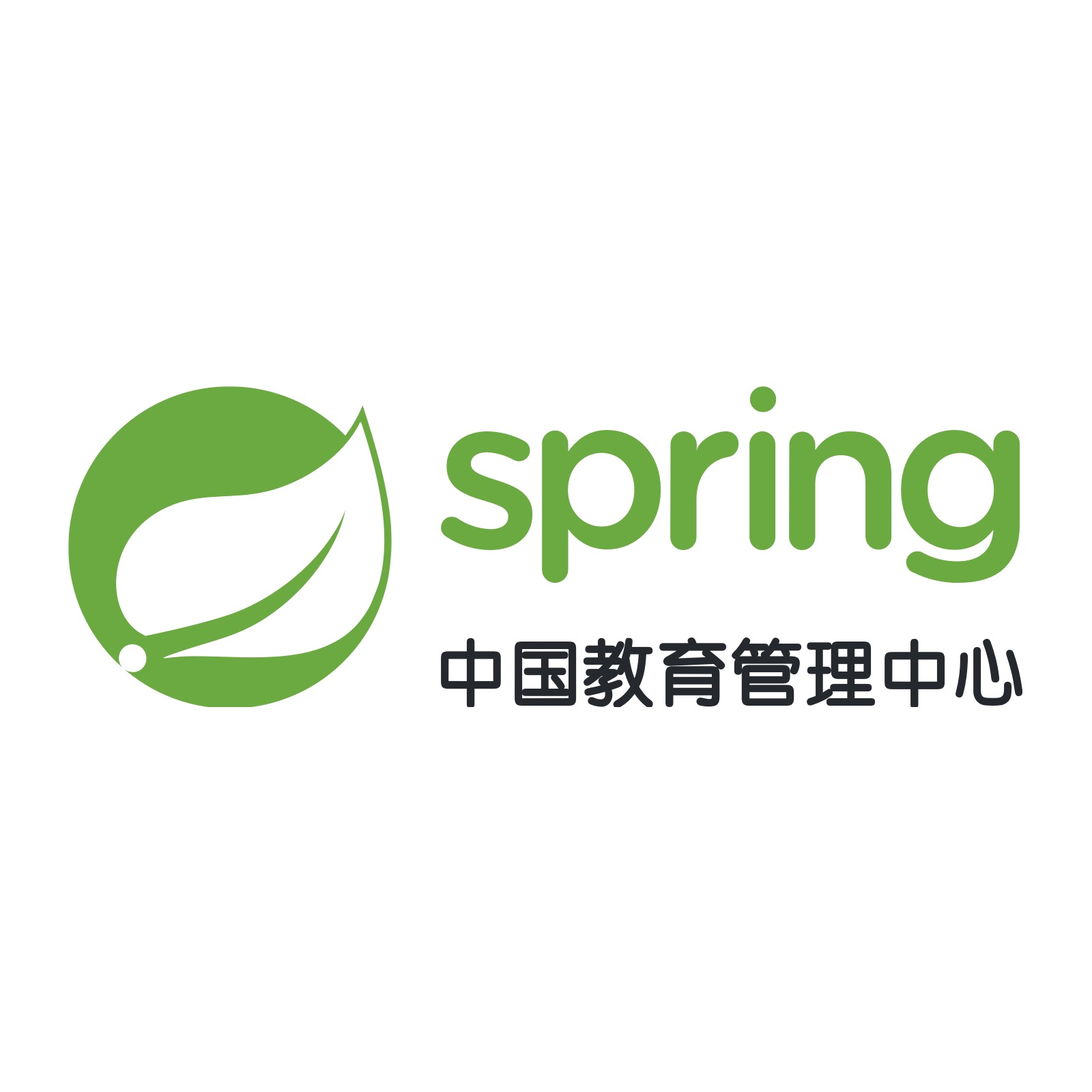1. 面向?qū)ο笤O(shè)計是 DDD 的核心
DDD 著重于將業(yè)務(wù)領(lǐng)域中的概念和對象映射到對象中,使對象模型能夠更好地反映業(yè)務(wù)的真實情況,從而使設(shè)計更具可理解性和可維護(hù)性。
DDD 是一種領(lǐng)域驅(qū)動的設(shè)計方法,旨在通過建立對領(lǐng)域模型的清晰理解來解決業(yè)務(wù)問題。和事務(wù)腳本不同,DDD 使用面向?qū)ο笤O(shè)計來應(yīng)對復(fù)雜的業(yè)務(wù)場景。
簡單來說,DDD 是由領(lǐng)域?qū)ο蟪休d業(yè)務(wù)邏輯,所有的業(yè)務(wù)操作均在模型對象上完成,同一對象上不同的業(yè)務(wù)操作構(gòu)成了對象的生命周期。
我們以訂單為例,如下圖所示:

- 首先,用戶操作下單,使用提交數(shù)據(jù)為其創(chuàng)建一個 Order 對象,版本 V1;
-
隨后,用戶進(jìn)行改地址操作,調(diào)用 Order 對象的
modifyAddress方法,Order 從原來的 V1 變成 V2; -
用戶完成支付后,調(diào)用 Order 對象的
paySuccess方法,Order 從 V2 變成 V3;
從圖上可見,在 DDD 設(shè)計中,所有的業(yè)務(wù)邏輯均由業(yè)務(wù)對象完成,所以面向?qū)ο笫?DDD 設(shè)計的核心。
基于 Spring Boot + MyBatis Plus + Vue & Element 實現(xiàn)的后臺管理系統(tǒng) + 用戶小程序,支持 RBAC 動態(tài)權(quán)限、多租戶、數(shù)據(jù)權(quán)限、工作流、三方登錄、支付、短信、商城等功能
- 項目地址:https://github.com/YunaiV/ruoyi-vue-pro
- 視頻教程:https://doc.iocoder.cn/video/
2. 為什么需要 Repository?
假設(shè),有一臺非常牛逼的計算機,計算資源無限、內(nèi)存大小無限、永不掉電、永不宕機,那最簡單高效的方式便是將模型對象全部放在內(nèi)存中。
但,現(xiàn)實不存在這樣的機器,我們不得不將內(nèi)存對象寫入磁盤,下次使用時,在將其從磁盤讀入到內(nèi)存。
整體結(jié)構(gòu)如下圖所示:

和上圖相比,具有如下特點:
-
業(yè)務(wù)操作沒變,仍舊依次完成 下單、改地址、支付等操作
-
引入持久化存儲(MySQL),可以將 Order 對象存儲于關(guān)系數(shù)據(jù)庫
-
配合 Order 的生命周期,操作中增加 save、load 和 update 等操作
- 用戶下單創(chuàng)建 Order 對象,通過 save 方法將 Order 對象持久化到 DB
- 接收到業(yè)務(wù)操作,需執(zhí)行l(wèi)oad,從 DB 加載數(shù)據(jù)到內(nèi)存 并對 Order 對象的狀態(tài)進(jìn)行恢復(fù)
- 在業(yè)務(wù)操作完成后,需執(zhí)行update,將 Order 對象的最新狀態(tài)同步的 DB
相對全內(nèi)存版本確實增加了不小的復(fù)雜性,為了更好的對這些復(fù)雜性進(jìn)行管理,引入 Repository 模式。
在領(lǐng)域驅(qū)動設(shè)計(DDD)中,
Repository是一種設(shè)計模式,它是用來存儲領(lǐng)域?qū)ο蟮娜萜鳌K峁┝艘环N統(tǒng)一的方式來查詢和存儲領(lǐng)域?qū)ο蟆?code style="font-size:14px;padding:2px 4px;margin-right:2px;margin-left:2px;color:rgb(30,107,184);background-color:rgba(27,31,35,.05);font-family:'Operator Mono', Consolas, Monaco, Menlo, monospace;">Repository提供了對底層數(shù)據(jù)存儲的抽象,允許應(yīng)用程序在沒有直接與數(shù)據(jù)存儲技術(shù)交互的情況下訪問數(shù)據(jù),同時該抽象允許在不修改應(yīng)用程序代碼的情況下更改數(shù)據(jù)存儲技術(shù)。
基于 Spring Cloud Alibaba + Gateway + Nacos + RocketMQ + Vue & Element 實現(xiàn)的后臺管理系統(tǒng) + 用戶小程序,支持 RBAC 動態(tài)權(quán)限、多租戶、數(shù)據(jù)權(quán)限、工作流、三方登錄、支付、短信、商城等功能
3. 什么才是好的 Repository ?
好的 Repository 應(yīng)該在滿足業(yè)務(wù)需求的前提下,具備以下特性:
-
高內(nèi)聚: 好的
Repository應(yīng)該滿足單一職責(zé)原則,每個Repository只關(guān)注一種領(lǐng)域?qū)ο蟮拇鎯Γ?/li> -
松耦合: 好的
Repository應(yīng)該通過抽象接口與其他層進(jìn)行交互,保證它們之間的耦合度低; -
簡單易用: 好的
Repository應(yīng)該提供一組易于使用的方法,方便開發(fā)人員使用; -
可維護(hù)性: 好的
Repository應(yīng)該易于維護(hù),維護(hù)人員不需要長時間閱讀代碼才能了解它的工作原理;
說的太官方了,用人話就是:
-
需要一個統(tǒng)一的
Repository接口,用于對易用方法save、load、update進(jìn)行管理 -
為每個聚合根創(chuàng)建一個
Repository接口,繼承自 統(tǒng)一Repository,只關(guān)注該聚合根的存儲 -
Repository的實現(xiàn)盡可能的簡單,最好不用實現(xiàn)(人都是懶的)
4. 初始 Spring Data
Spring Data是一個框架,旨在簡化數(shù)據(jù)訪問層的開發(fā)。它通過抽象和模板化方法,使得與各種數(shù)據(jù)存儲(如關(guān)系型數(shù)據(jù)庫,文檔數(shù)據(jù)庫,圖形數(shù)據(jù)庫,緩存等)的交互變得更加簡單和標(biāo)準(zhǔn)化。
Spring Data 通過提供簡單的、通用的數(shù)據(jù)訪問接口(如Repository)和自動生成實現(xiàn)代碼,使得開發(fā)人員不必編寫重復(fù)的數(shù)據(jù)訪問代碼。這樣,開發(fā)人員可以專注于業(yè)務(wù)邏輯,而無需關(guān)注數(shù)據(jù)存儲和訪問的細(xì)節(jié)。
總的來說,Spring Data的主要解決的問題是:簡化數(shù)據(jù)訪問層的開發(fā),提高代碼復(fù)用性,降低開發(fā)復(fù)雜度。
Spring Data 對多種數(shù)據(jù)存儲提供了支持,本文以 Spring Data Jpa 為例,快速實現(xiàn)應(yīng)用程序與關(guān)系數(shù)據(jù)庫的交互。
4.1. 引入 Spring Data Jpa
Spring Data JPA 是 Spring Data 家族的重要成員,主要解決 Java 應(yīng)用程序使用 JPA 完成對數(shù)據(jù)庫的訪問問題。它提供了一種簡單而靈活的方法來訪問和管理數(shù)據(jù),并且可以消除重復(fù)代碼和提高開發(fā)效率。
首先,需要在pom中 引入 spring-data-jpa-starter,具體如下:
org.springframework.boot
spring-boot-starter-data-jpa
其次,引入 MySQL 驅(qū)動,具體如下:
com.mysql
mysql-connector-j
runtime
Spring Data Jpa 默認(rèn)實現(xiàn)是 Hibernate,而 Hibernate 是目前最流行且功能最強大的 JPA 實現(xiàn),它提供了強大的映射、查詢和事務(wù)管理能力。
4.2. 完成配置
在 application.yml 增加 DB 和 Jpa 相關(guān)配置,具體如下:
spring:
application:
name:Spring-Data-for-DDD-demo
datasource:
#數(shù)據(jù)庫配置信息
driver-class-name:com.mysql.cj.jdbc.Driver
url:jdbc:mysql://127.0.0.1:3306/books
username:root
password:root
jpa:
#打印sql
show-sql:true
在啟動類上啟用 Spring Data Jpa。
@SpringBootApplication
//開啟SpringDataJpa,basePackages是Repository接口存放的包路徑
@EnableJpaRepositories(basePackages="com.geekhalo.springdata4ddd.order.repository")
publicclassApplication{
publicstaticvoidmain(String[]args){
SpringApplication.run(Application.class,args);
}
}
4.3. 使用 Repository
一切就緒,接下來就可以為模型創(chuàng)建專屬 Repository,具體如下:
publicinterfaceOrderCommandRepositoryextendsJpaRepository<Order,Long>{
}
至此,Order 的專屬 Repository 就開發(fā)完成。
不知道你是否存在疑問:
- 說好的統(tǒng)一的易用方法在哪里?
- 為什么沒有看到實現(xiàn)代碼?
一般情況下,JpaRepository 接口中的方法就能滿足大部分需求,典型方法包括:

5. 實戰(zhàn)--訂單
為了體現(xiàn) Spring Data Jpa的強大功能,以最常見的訂單為例,業(yè)務(wù)模型如下圖所示:

-
一筆下單對應(yīng)一個訂單(
Order) -
一個訂單可以有一個收獲地址(
OrderAddress) -
一個訂單可以關(guān)聯(lián)多個訂單項(
OrderItem)
對應(yīng)到領(lǐng)域模型如下:

核心代碼如下:
@Data
@Entity
@Table(name="tb_order")
@Setter(AccessLevel.PRIVATE)
publicclassOrder{
@Id
@GeneratedValue(strategy=GenerationType.IDENTITY)
privateLongid;
@Column(name="user_id")
privateLonguserId;
@Column(name="status")
@Enumerated(EnumType.STRING)
privateOrderStatusstatus;
@Column(name="price")
privateintprice;
//收貨地址
@OneToOne(cascade=CascadeType.ALL,fetch=FetchType.LAZY)
@JoinColumn(name="user_address_id")
privateOrderAddressaddress;
//訂單項
@OneToMany(fetch=FetchType.LAZY,cascade=CascadeType.ALL)
@JoinColumn(name="order_id")
privateListitems=newArrayList<>();
}
5.1. 生單
先簡單看下生單的核心代碼,具體如下:
@Transactional(readOnly=false)
publicOrdercreateOrder(CreateOrderCommandcommand){
//創(chuàng)建內(nèi)存對象
Orderorder=Order.create(command);
//保存到數(shù)據(jù)庫
this.repository.save(order);
returnorder;
}
//Order實體上的create方法
publicstaticOrdercreate(CreateOrderCommandcommand){
//創(chuàng)建內(nèi)存對象
Orderorder=newOrder();
order.setUserId(command.getUserId());
StringuserAddress=command.getUserAddress();
if(!StringUtils.hasText(userAddress)){
//設(shè)置收獲地址
OrderAddressorderAddress=newOrderAddress();
orderAddress.setDetail(userAddress);
order.setAddress(orderAddress);
}
//添加訂單項
ListproductForBuys=command.getProducts();
productForBuys.stream()
.map(productForBuy->OrderItem.create(productForBuy))
.forEach(orderItem->order.addOrderItem(orderItem));
order.init();
returnorder;
}
單元測試,具體如下:
@Test
voidcreateOrder(){
//創(chuàng)訂單,將整個Order聚合根全部保存到數(shù)據(jù)庫,包括
//1.order
//2.orderItem
//3.orderAddress
CreateOrderCommandcommand=createOrderCommand(10L);
Orderorder=this.applicationService.createOrder(command);
Assertions.assertNotNull(order.getId());
}
運行單元測試,打印以下 SQL:
//createOrder方法中repository.save(order)產(chǎn)生的SQL:
//插入收貨地址
Hibernate:insertintotb_order_address(detail)values(?)
//插入order
Hibernate:insertintotb_order(user_address_id,price,status,user_id)values(?,?,?,?)
//插入orderItem
Hibernate:insertintotb_order_item(amount,price,product_id,product_name,status)values(?,?,?,?,?)
Hibernate:insertintotb_order_item(amount,price,product_id,product_name,status)values(?,?,?,?,?)
Hibernate:insertintotb_order_item(amount,price,product_id,product_name,status)values(?,?,?,?,?)
Hibernate:insertintotb_order_item(amount,price,product_id,product_name,status)values(?,?,?,?,?)
Hibernate:insertintotb_order_item(amount,price,product_id,product_name,status)values(?,?,?,?,?)
//將orderitem與order進(jìn)行綁定(這步存在性能損耗,但是目前沒有更好的解決方案)
Hibernate:updatetb_order_itemsetorder_id=?whereid=?
Hibernate:updatetb_order_itemsetorder_id=?whereid=?
Hibernate:updatetb_order_itemsetorder_id=?whereid=?
Hibernate:updatetb_order_itemsetorder_id=?whereid=?
Hibernate:updatetb_order_itemsetorder_id=?whereid=?
是否發(fā)現(xiàn) Spring Data Jpa 的強大之處:核心邏輯全部內(nèi)聚在 Order 類,在沒有寫任何數(shù)據(jù)層訪問代碼的前提下,一個 save 方法便可以將這組高內(nèi)聚的對象保存到 DB。
5.2. 修改地址
修改地址核心代碼如下:
@Transactional(readOnly=false)
publicvoidmodifyAddress(LongorderId,Stringaddress){
OptionalorderOptional=repository.findById(orderId);
if(orderOptional.isPresent()){
Orderorder=orderOptional.get();
order.modifyAddress(address);
this.repository.save(order);
}
}
//Order實體上的方法
publicvoidmodifyAddress(Stringaddress){
if(this.address==null){
this.address=newOrderAddress();
}
this.address.modify(address);
}
//OrderAddress實體上的方法
publicvoidmodify(Stringaddress){
setDetail(address);
}
首先,看一個添加地址的場景,生單時沒有提供收貨地址,生單后修改地址:

@Test
voidmodifyAddress_add(){
//新訂單不存儲地址信息(沒有userAddress)
Orderorder=null;
{
CreateOrderCommandcommand=createOrderCommand(20L);
//將收獲地址設(shè)置為null
command.setUserAddress(null);
order=this.applicationService.createOrder(command);
Assertions.assertNotNull(order.getId());
}
//修改時,直接創(chuàng)建地址(插入新數(shù)據(jù))
Stringaddress="新增地址";
//Lazy加載,只加載orderAddress
//修改后,只更新OrderAddress
this.applicationService.modifyAddress(order.getId(),address);
OrderorderInDB=this.repository.findById(order.getId()).get();
Assertions.assertEquals(address,orderInDB.getAddress().getDetail());
}
運行單測可,控制臺輸出以下信息:
//createOrder方法中repository.save(order)產(chǎn)生的SQL:
//生單時沒有地址,所以沒有向tb_order_address插入數(shù)據(jù)
Hibernate:insertintotb_order(user_address_id,price,status,user_id)values(?,?,?,?)
Hibernate:insertintotb_order_item(amount,price,product_id,product_name,status)values(?,?,?,?,?)
Hibernate:insertintotb_order_item(amount,price,product_id,product_name,status)values(?,?,?,?,?)
Hibernate:insertintotb_order_item(amount,price,product_id,product_name,status)values(?,?,?,?,?)
Hibernate:insertintotb_order_item(amount,price,product_id,product_name,status)values(?,?,?,?,?)
Hibernate:insertintotb_order_item(amount,price,product_id,product_name,status)values(?,?,?,?,?)
Hibernate:updatetb_order_itemsetorder_id=?whereid=?
Hibernate:updatetb_order_itemsetorder_id=?whereid=?
Hibernate:updatetb_order_itemsetorder_id=?whereid=?
Hibernate:updatetb_order_itemsetorder_id=?whereid=?
Hibernate:updatetb_order_itemsetorder_id=?whereid=?
//modifyAddress方法中repository.findById(orderId)產(chǎn)生的SQL
//從DB中加載數(shù)據(jù),構(gòu)建內(nèi)存的Order對象
Hibernate:selectorder0_.idasid1_0_0_,order0_.user_address_idasuser_add5_0_0_,order0_.priceasprice2_0_0_,order0_.statusasstatus3_0_0_,order0_.user_idasuser_id4_0_0_fromtb_orderorder0_whereorder0_.id=?
//modifyAddress方法中this.repository.save(order)產(chǎn)生的SQL
//為Order對象添加orderAddress后,自動向數(shù)據(jù)庫添加數(shù)據(jù)
Hibernate:insertintotb_order_address(detail)values(?)
//更新Order的user_address,完成數(shù)據(jù)綁定
Hibernate:updatetb_ordersetuser_address_id=?,price=?,status=?,user_id=?whereid=?
//repository.findById(order.getId())產(chǎn)生的SQL
//從DB中加載數(shù)據(jù),構(gòu)建內(nèi)存的Order對象,進(jìn)行結(jié)果檢測
Hibernate:selectorder0_.idasid1_0_0_,order0_.user_address_idasuser_add5_0_0_,order0_.priceasprice2_0_0_,order0_.statusasstatus3_0_0_,order0_.user_idasuser_id4_0_0_fromtb_orderorder0_whereorder0_.id=?
看一個更新地址的場景,生單時設(shè)置收貨地址,然后操作修改地址:
@Test
voidmodifyAddress_update(){
//新訂單部存在地址信息(沒有userAddress)
Orderorder=null;
{
CreateOrderCommandcommand=createOrderCommand(30L);
order=this.applicationService.createOrder(command);
Assertions.assertNotNull(order.getId());
}
//Lazy加載,只加載orderAddress
//修改后,只更新OrderAddress
Stringaddress="修改地址";
this.applicationService.modifyAddress(order.getId(),address);
OrderorderInDB=this.repository.findById(order.getId()).get();
Assertions.assertEquals(address,orderInDB.getAddress().getDetail());
}
運行測試用例,輸出如下信息:
//createOrder方法中repository.save(order)產(chǎn)生的SQL:
//創(chuàng)建帶有地址的訂單
Hibernate:insertintotb_order_address(detail)values(?)
Hibernate:insertintotb_order(user_address_id,price,status,user_id)values(?,?,?,?)
Hibernate:insertintotb_order_item(amount,price,product_id,product_name,status)values(?,?,?,?,?)
Hibernate:insertintotb_order_item(amount,price,product_id,product_name,status)values(?,?,?,?,?)
Hibernate:insertintotb_order_item(amount,price,product_id,product_name,status)values(?,?,?,?,?)
Hibernate:insertintotb_order_item(amount,price,product_id,product_name,status)values(?,?,?,?,?)
Hibernate:insertintotb_order_item(amount,price,product_id,product_name,status)values(?,?,?,?,?)
Hibernate:updatetb_order_itemsetorder_id=?whereid=?
Hibernate:updatetb_order_itemsetorder_id=?whereid=?
Hibernate:updatetb_order_itemsetorder_id=?whereid=?
Hibernate:updatetb_order_itemsetorder_id=?whereid=?
Hibernate:updatetb_order_itemsetorder_id=?whereid=?
//modifyAddress方法中repository.findById(orderId)產(chǎn)生的SQL
//從DB中加載數(shù)據(jù),構(gòu)建內(nèi)存的Order對象
Hibernate:selectorder0_.idasid1_0_0_,order0_.user_address_idasuser_add5_0_0_,order0_.priceasprice2_0_0_,order0_.statusasstatus3_0_0_,order0_.user_idasuser_id4_0_0_fromtb_orderorder0_whereorder0_.id=?
//在對order.address進(jìn)行訪問時,進(jìn)行自動加載
Hibernate:selectorderaddre0_.idasid1_1_0_,orderaddre0_.detailasdetail2_1_0_fromtb_order_addressorderaddre0_whereorderaddre0_.id=?
//modifyAddress方法中this.repository.save(order)產(chǎn)生的SQL
//OrderAddress信息發(fā)生變化,將變更更新到數(shù)據(jù)庫
Hibernate:updatetb_order_addresssetdetail=?whereid=?
//repository.findById(order.getId())產(chǎn)生的SQL
//從DB中加載數(shù)據(jù),構(gòu)建內(nèi)存的Order對象,進(jìn)行結(jié)果檢測
Hibernate:selectorder0_.idasid1_0_0_,order0_.user_address_idasuser_add5_0_0_,order0_.priceasprice2_0_0_,order0_.statusasstatus3_0_0_,order0_.user_idasuser_id4_0_0_fromtb_orderorder0_whereorder0_.id=?
從該用例可看出,Jpa 具有:
- 懶加載能力,只有在訪問到關(guān)聯(lián)數(shù)據(jù)時才對數(shù)據(jù)進(jìn)行加載
-
自動同步能力,新增對象通過
insert將其插入數(shù)據(jù)庫,修改對象通過update對數(shù)據(jù)庫數(shù)據(jù)進(jìn)行更新
5.3. 支付
修改地址是簡單的一對一,那對于較復(fù)雜的一對多,Jpa 是否也具有 懶加載 和 自動同步能力呢?
支付核心代碼如下:
@Transactional(readOnly=false)
publicvoidpaySuccess(PaySuccessCommandcommand){
OptionalorderOptional=repository.findById(command.getOrderId());
if(orderOptional.isPresent()){
Orderorder=orderOptional.get();
order.paySuccess(command);
this.repository.save(order);
}
}
//Order實體上的paySuccess方法
publicvoidpaySuccess(PaySuccessCommandpaySuccessCommand){
this.setStatus(OrderStatus.PAID);
this.items.forEach(OrderItem::paySuccess);
}
//OrderItem上的paySuccess方法
publicvoidpaySuccess(){
setStatus(OrderItemStatus.PAID);
}
單元測試如下:
@Test
voidpaySuccess(){
Orderorder=null;
{
CreateOrderCommandcommand=createOrderCommand(50L);
order=this.applicationService.createOrder(command);
Assertions.assertNotNull(order.getId());
}
PaySuccessCommandpaySuccessCommand=newPaySuccessCommand();
paySuccessCommand.setOrderId(order.getId());
paySuccessCommand.setPrice(1000L);
paySuccessCommand.setChanel("微信支付");
//Lazy加載,只加載orderItem
//修改后,更新order和OrderItem
this.applicationService.paySuccess(paySuccessCommand);
OrderorderInDB=this.repository.findById(order.getId()).get();
Assertions.assertEquals(OrderStatus.PAID,orderInDB.getStatus());
orderInDB.getItems().forEach(orderItem->{
Assertions.assertEquals(OrderItemStatus.PAID,orderItem.getStatus());
});
}
運行單元測試,控制臺出現(xiàn)信息如下:
//createOrder方法中repository.save(order)產(chǎn)生的SQL:
//創(chuàng)建帶有地址的訂單
Hibernate:insertintotb_order_address(detail)values(?)
Hibernate:insertintotb_order(user_address_id,price,status,user_id)values(?,?,?,?)
Hibernate:insertintotb_order_item(amount,price,product_id,product_name,status)values(?,?,?,?,?)
Hibernate:insertintotb_order_item(amount,price,product_id,product_name,status)values(?,?,?,?,?)
Hibernate:insertintotb_order_item(amount,price,product_id,product_name,status)values(?,?,?,?,?)
Hibernate:insertintotb_order_item(amount,price,product_id,product_name,status)values(?,?,?,?,?)
Hibernate:insertintotb_order_item(amount,price,product_id,product_name,status)values(?,?,?,?,?)
Hibernate:updatetb_order_itemsetorder_id=?whereid=?
Hibernate:updatetb_order_itemsetorder_id=?whereid=?
Hibernate:updatetb_order_itemsetorder_id=?whereid=?
Hibernate:updatetb_order_itemsetorder_id=?whereid=?
Hibernate:updatetb_order_itemsetorder_id=?whereid=?
//paySuccess方法中repository.findById(orderId)產(chǎn)生的SQL
//從DB中加載數(shù)據(jù),構(gòu)建內(nèi)存的Order對象
Hibernate:selectorder0_.idasid1_0_0_,order0_.user_address_idasuser_add5_0_0_,order0_.priceasprice2_0_0_,order0_.statusasstatus3_0_0_,order0_.user_idasuser_id4_0_0_fromtb_orderorder0_whereorder0_.id=?
//訪問order.items,觸發(fā)自動加載
Hibernate:selectitems0_.order_idasorder_id7_2_0_,items0_.idasid1_2_0_,items0_.idasid1_2_1_,items0_.amountasamount2_2_1_,items0_.priceasprice3_2_1_,items0_.product_idasproduct_4_2_1_,items0_.product_nameasproduct_5_2_1_,items0_.statusasstatus6_2_1_fromtb_order_itemitems0_whereitems0_.order_id=?
//paySuccess方法中this.repository.save(order)產(chǎn)生的SQL
//將Order變更更新到數(shù)據(jù)庫
Hibernate:updatetb_ordersetuser_address_id=?,price=?,status=?,user_id=?whereid=?
//將OrderItem變更更新到數(shù)據(jù)庫
Hibernate:updatetb_order_itemsetamount=?,price=?,product_id=?,product_name=?,status=?whereid=?
Hibernate:updatetb_order_itemsetamount=?,price=?,product_id=?,product_name=?,status=?whereid=?
Hibernate:updatetb_order_itemsetamount=?,price=?,product_id=?,product_name=?,status=?whereid=?
Hibernate:updatetb_order_itemsetamount=?,price=?,product_id=?,product_name=?,status=?whereid=?
Hibernate:updatetb_order_itemsetamount=?,price=?,product_id=?,product_name=?,status=?whereid=?
//repository.findById(order.getId())產(chǎn)生的SQL
//從DB中加載數(shù)據(jù),構(gòu)建內(nèi)存的Order對象,進(jìn)行結(jié)果檢測
Hibernate:selectorder0_.idasid1_0_0_,order0_.user_address_idasuser_add5_0_0_,order0_.priceasprice2_0_0_,order0_.statusasstatus3_0_0_,order0_.user_idasuser_id4_0_0_fromtb_orderorder0_whereorder0_.id=?
從 SQL 中可見,在復(fù)雜的 一對多 場景,懶加載 和 自動同步能力 仍舊有效。
從代碼上可以清晰得出:在 Spring Data Jpa 的助力下,無需編寫任何數(shù)據(jù)層訪問代碼,便可以完成領(lǐng)域?qū)ο蟮墓芾怼?/p>
6. 小結(jié)
DDD 和 Jpa 都是面向?qū)ο笤O(shè)計的巔峰之作,兩者結(jié)合威力巨大。
結(jié)合使用 DDD 和 JPA 可以有效地將領(lǐng)域模型與數(shù)據(jù)庫持久化技術(shù)相結(jié)合。開發(fā)人員可以使用領(lǐng)域驅(qū)動的方法管理數(shù)據(jù),并通過 JPA 將數(shù)據(jù)存儲在數(shù)據(jù)庫中,從而避免冗長的數(shù)據(jù)持久化代碼。
此外,使用 DDD 和 JPA 還有其他優(yōu)勢:
- 提高代碼可讀性: 領(lǐng)域驅(qū)動的設(shè)計方法可以幫助開發(fā)人員更清晰地了解領(lǐng)域模型,使代碼更易于閱讀和維護(hù)。
- 減少代碼量: 使用 JPA 可以減少代碼量,因為開發(fā)人員不需要編寫手動的數(shù)據(jù)持久化代碼。
- 提高代碼的可重用性: 通過使用領(lǐng)域模型,開發(fā)人員可以創(chuàng)建一組可重用的實體,并在多個地方使用它們。
- 提高代碼的可擴展性: 使用 DDD 和 JPA 可以使代碼更易于擴展,因為它們遵循領(lǐng)域驅(qū)動的設(shè)計方法。
總之,使用 DDD 和 JPA 可以幫助開發(fā)人員更有效地解決業(yè)務(wù)問題,提高代碼的可讀性,可重用性和可擴展性,并減少代碼量。
審核編輯 :李倩
-
數(shù)據(jù)庫
+關(guān)注
關(guān)注
7文章
3795瀏覽量
64366 -
spring
+關(guān)注
關(guān)注
0文章
340瀏覽量
14340 -
ddd
+關(guān)注
關(guān)注
0文章
23瀏覽量
2923
原文標(biāo)題:用好 DDD 必須先過 Spring Data 這關(guān)
文章出處:【微信號:芋道源碼,微信公眾號:芋道源碼】歡迎添加關(guān)注!文章轉(zhuǎn)載請注明出處。
發(fā)布評論請先 登錄
相關(guān)推薦
特斯拉豪賭中國工廠,必須先過資金和人才關(guān)
java spring教程
什么是java spring
Spring工作原理
Spring應(yīng)用 1 springXML配置說明
蘋果調(diào)查特斯拉為收購做準(zhǔn)備?先過了馬斯克這關(guān)再說
Spring認(rèn)證_什么是Spring GraphQL?

Spring Data JDBC - 如何使用自定義ID

"Scalable, Distributed Systems Using Akka, Spring Boot, DDD, and Java--轉(zhuǎn)"

Spring干掉原生JVM?





 用好DDD必須先過Spring Data這關(guān)
用好DDD必須先過Spring Data這關(guān)











評論